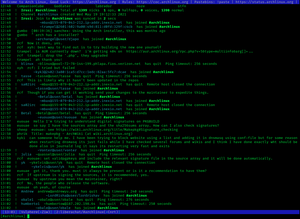Shell account

A shell account is a user account on a remote server, typically running under Unix or Linux operating systems. The account gives access to a text-based command-line interface in a shell, via a terminal emulator. The user typically communicates with the server via the SSH protocol. In the early days of the Internet, one would connect using a modem.
Shell accounts were first made accessible in the 1980s to interested members of the public by Internet Service Providers—such as Netcom, Panix, The World, Digex—although in rare instances individuals had access to shell accounts through their employer or university. They were used for file storage, web space, email accounts, newsgroup access and software development.[1][2][3] Before the late 1990s, shell accounts were often much less expensive than full net access through SLIP or PPP, which was required to access the then-new World Wide Web. Most personal computer operating systems also lacked TCP/IP stacks by default before the mid-1990s. Products such as The Internet Adapter were devised that could work as a proxy server, allowing users to run a web browser for the price of a shell account.[4]
While direct internet connections made shell accounts largely obsolete for most users, they remained popular with some technically inclined subscribers.[5]
Shell providers are often found to offer shell accounts at low-cost or free. These shell accounts generally provide users with access to various software and services including compilers, IRC clients, background processes, FTP, text editors (such as nano) and email clients (such as pine).[6] Some shell providers may also allow tunneling of traffic to bypass corporate firewalls.
See also
[edit]- Bulletin board system
- FreeBSD jail
- Free-net
- SDF Public Access Unix System, one of the oldest and largest non-profit public access UNIX systems on the Internet.
- Slirp, a free software application similar to The Internet Adapter
- SSH tunneling
- The Big Electric Cat was a public access computer system in New York City in the late 1980s, known on Usenet as node dasys1.
- The Internet Adapter, a graphical application front end for internet access using shell accounts allowing TCP/IP-based applications such as Netscape to run over the shell account.
- The WELL, best known for its Internet forums, but also provides email, shell accounts, and web pages.
References
[edit]- ^ "Glossary". yossman.net. December 29, 1996. Retrieved 27 September 2010.
- ^ Michael K. Johnson (April 1996), "Choosing an Internet Service Provider", Linux Journal (24), Specialized Systems, Seattle, USA, ISSN 1075-3583,
If you are comfortable with the command-line interface that Linux provides, you will probably be comfortable with a Shell account on a Linux or Unix computer managed by an ISP. Once your modem connects to the other modem and you log in, it is the same as an xterm session or a console login (without graphics capabilities) on your Linux box, except that the remote computer you are logged into is connected to the Internet. You usually use a standard Unix shell, with roughly the same choices available on your own Linux system, although some shell accounts also provide an optional menu interface similar to what a BBS provides.
- ^ Michael K. Johnson (October 1, 1994), "For Internauts, finding a port of call can be a trying experience. I recently ran the gauntlet of choosing a commercial Internet access provider (do I have enough mixed metaphors yet?) and would like to share my experiences, both good and bad.", Linux Journal,
The other day, I started shopping, both for a Unix shell account, and for a SLIP or PPP connection that allows my home Linux network to become a real part of the Internet.
- ^ "The Web from a Unix shell account".
Until recently, if you wanted to use Mosaic for the World Wide Web, you needed a direct SLIP or PPP connection to the Internet. In many countries, such a connection costs a leg and an arm. Now, you can also use Mosaic if you connect to the Internet through a Unix shell account. The administrators may not even notice that you do.
- ^ "Core Fans of Shell Accounts Mourn Netcom's Demise". Los Angeles Times. The Washington Post. 9 October 2000. Retrieved 28 December 2023.
- ^ Cliff (July 14, 2004). "Unix Shell Accounts?". aks.slashdot.org. Retrieved 27 September 2010.
